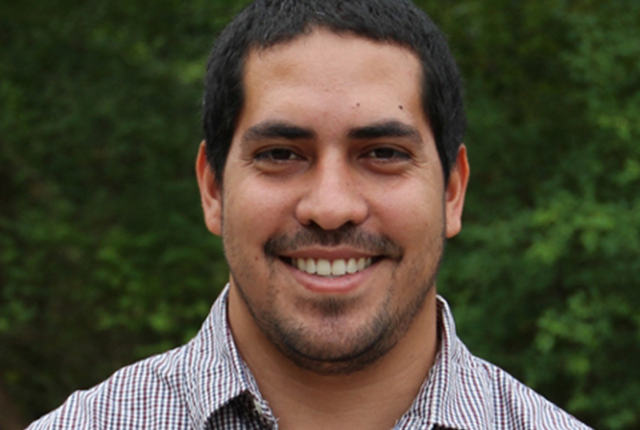
Hernan Castaneda, M’16, had the opportunity to study at the University of Hartford to pursue his Master of Engineering in civil engineering. He first earned his Bachelor of Science in mechanical engineering at Universidad del Valle in Cali, Colombia, in 2010, and was prepared to take on a new challenge to continue his education. He began researching schools in the New England area in 2014 to explore a new area in engineering to expand his background and skill set. During this process, he says what motivated him most to choose to attend UHart was his interaction with current faculty and the welcoming campus environment. Castaneda is now working as a graduate research assistant in the department of Civil and Environmental Engineering at the University of Massachusetts–Amherst as he pursues his doctorate degree. He credits his experience at UHart for preparing him for these achievements.
Castaneda had a unique opportunity to work as a visiting assistant professor in the College of Engineering, Technology, and Architecture’s Department of Civil, Environmental, and Biomedical Engineering shortly after he graduated, from the fall 2016 semester through the summer 2017 semester. In the fall 2017 semester, he began his doctoral program, but was able to continue teaching as a part-time faculty during his first year of the program through the spring 2018 semester.
Castaneda also accomplished a great deal during his graduate school career. For example, he accepted UHart’s most prestigious graduate honor, the Regents' Award, at the 2016 Graduate Research/Creativity Symposium. His dedication to research and problem-solving earned him not just this honor, but great success beyond UHart that he still appreciates to this day.
Hernan Castaneda M’16, Master of Engineering in civil engineeringGiven that the classes are relatively small, UHart offers a unique opportunity for one-on-one interaction between students and professors. Take advantage of this, whether you are an undergraduate or graduate student, as you will always have the tools and resources for guidance and support here.
Castaneda credits his faculty David Pines, professor of civil engineering, and Saleh Keshawarz, professor and program director of civil engineering, for paving the way for his success. Pines was the first person he spoke to at UHart, and through his enthusiasm and help, the decision for Castaneda to attend the University was simple. Keshawarz guided him throughout his graduate school career as his academic advisor. He also credits former assistant professor Sigridur Bjarnadottir for supporting him during his master’s research project. He adds how much he appreciated his other faculty members, Professor Clara Fang and Associate Professor Ted Sussmann, for all their support during his studies.
When asked what inspired him to work in the civil engineering field, Castaneda says he is most fascinated by the behavior of structures and individual components at a system level and a subsystem level. His primary research interests are in the field of seismic design of cold-formed steel structures and he is passionate about finding sustainable alternatives for structural components like bamboo beams and columns. Today, there are two components to his research for his role: experimental and computational.
“For the experimental side, I work in the structural lab to build specimens, test them, and record the data. I am currently working on an experimental test program for columns in cold-formed steel construction where we are evaluating the strength of the columns for different bearing conditions,” he says. “This experience is very much a hands-on activity— researchers are moving, cutting, screwing, working with sensors, operating an actuator, recording videos, taking photos, writing.”
He continues, “For the computational side, I work on developing 3D finite element models of subsystems or systems of floor diaphragms in cold-formed steel-framed buildings. During this process, one of the key factors is to validate the computational model with experimental results and/or analytical results.”
Castaneda is on his way to a rewarding career in civil engineering and feels grateful to have experienced part of his education at the University of Hartford.